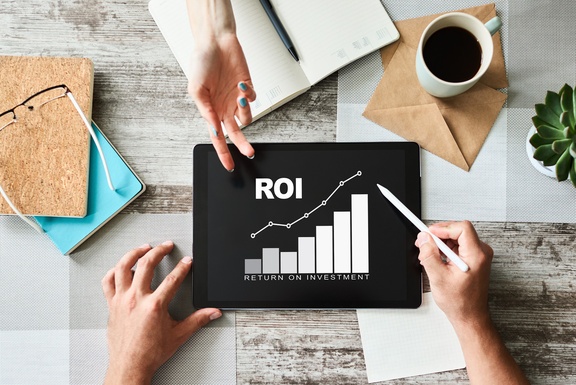Selling a company is one of the most exciting aspects of business. In one decision, the lives of dozens, hundreds, or even thousands of people will change. For the company’s owners, selling their company is also a major decision that – if done correctly – can lead to a life-changing sum of cash. This article will explore how to prepare a company for sale in six key steps.
1. Assemble a Strong Team
No matter how experienced a company’s leadership team is, it’s always a good idea to retain the services Merger and Acquisition (M&A) team. An M&A team will be an invaluable asset when it comes to guiding the company through the intense process of preparing for a sale. This includes several crucial tasks such as:
- Preparing the company’s sale strategy
- Preparing marketing materials for investors
- Sourcing interested buyers
- Negotiating on behalf of the company
- Ensuring financial compliance
Additionally, the M&A team will provide helpful analysis of revenue, expenses, financial forecasting, and modeling to help communicate potential deal outcomes to the company’s leadership. This helps ensure that the company avoids making the wrong decisions throughout the sale process.
In conjunction with an M&A team, it’s also advisable to engage a legal team. If the company doesn’t already have an internal legal team then they’ll want to employ the services of an outside firm. As you might imagine, selling a company involves quite a bit of paperwork, contracts, and compliance requirements. The legal team will ensure all legal compliance while also helping to negotiate the transaction documents on your behalf.
2. Craft a Compelling Equity Story
Once you’ve got M&A and legal teams in place, let’s examine how to prepare a company for sale. The next step: crafting the company’s equity story.
Crafting a compelling story involves creating a narrative around why the company was founded, its history, why it’s being sold, and why it presents a great opportunity for prospective buyers. The main components of a good equity story include:
- Reasons for Selling: You’ll want to assure prospective buyers that you aren’t selling the company under duress.
- Business Prospects: What does the future of the business look like?
- Unique Selling Proposition: What sets your company above competitors? Common USPs include price, quality, convenience, and differentiation.
- Industry Forecasts: What does the future look like for your company’s industry? In some cases, this alone might be enough to attract buyers. For example, selling an AI company in 2023 has been easy to do because investors are excited about the future of generative AI.
- Opportunities: What unique opportunities lie ahead for your business?
- Best Potential Buyers: What type of organization is best suited to take over your company? A larger corporation? Private equity firm? Single buyer?
It’s easy to want to cast storytelling aside as an ancillary step while selling a business. But, having a great story can often be the difference between fielding a bidding war for your company or constantly having to cut your asking price. This brings us to step #3.
3. Determine a Valuation
Determining a valuation is perhaps the most important part of preparing a company for sale. For the business’s owners, this sum marks the culmination of years – if not decades – of hard work.
When selling a company, you want to sell it for the highest possible price. But, remember that valuations are subjective. One buyer might look at your company and see a promising enterprise that’s worth its weight in gold. Meanwhile, another might look and see a dying corporation in a shrinking industry. This is why it’s so important to support your valuation with tangible factors. Again, this is where the guidance of an M&A firm will be invaluable.
Many factors can come into play when valuing a company. But, the most common are:
- Financial Statements: This includes income statements, balance sheets, and cash flow statements.
- Balance sheet: A snapshot of a company’s financial condition that includes assets (both current and non-current), liabilities, and shareholders’ equity.
- Income statement: A summary of a company’s revenues, costs, and expenses over a specific period that helps buyers assess the profitability of the company.
- Cash flow statement: Tracks the inflow and outflow of cash and cash equivalents. This is usually divided into operating activities, investing activities, and financing activities.
- Profitability: Be sure to highlight any consistent revenue growth and assess profit margins. If your company is not profitable yet then you will also want to include a detailed plan on how you aim to reach profitability in the future and what concrete steps you’re taking to reach that goal.
- Comparable Sales: Recent sales of similar companies can help when determining how much to sell your company for. For example, if one of your main competitors just sold for $300 million then you can make a strong case for a comparable valuation, if not more, depending on your size relative to that company.
- Earnings Multiples: Calculate valuation multiples, such as EV/Sales or EV/EBITDA.
- Asset Valuation: Assess the value of the company’s tangible and intangible assets, including real estate, equipment, inventory, intellectual property, and brand.
- Debt and Liabilities: Examine the company’s outstanding debt, liabilities, and contingent liabilities. These obligations can impact the company’s net value.
Again, this is another reason why it’s important to employ the help of an M&A team. An M&A team will be able to help the company fetch the highest possible valuation while also keeping the valuation realistic enough to attract buyers. Additionally, they might also be able to unlock additional value from the company that the owners didn’t realize was there.
4. Financial Statements
Before getting acquired, a company can expect prospective buyers to delve into its financial documents. After all, very few people are spontaneous enough to buy a new car without looking under the hood. By reviewing the financial documents, buyers will be able to validate all of the company’s financial claims.
The most important financial statements to have ready for buyers:
- Earnings Before Interest, Taxes, Depreciation, Amortization (EBITDA): This financial metric is used to assess a company’s operating performance and profitability. It’s a critical measure of earnings because it excludes certain non-operating expenses, one-off events, capitalized expenses, and other non-cash items. This allows buyers to focus on the company’s ability to generate income from its core business operations.
- Buyers will want to see that the company has a history of maintaining EBITDA margins and increasing them over time.
- Concentration of Current Trading: In the months leading up to a sale, many companies will optimize their current financial performance to make the company more attractive.
- Balance Sheet: Many companies will “clean up” their balance sheets by disposing of all non-core assets, reducing expenses, and cutting liabilities. This can help boost the company’s profitability and make it more attractive to buyers.
You can think of a company’s financial statements like a vehicle’s CarFax report. They tell the history of the company, what financial decisions were made, and whether the company is in good shape or not. But, numbers also don’t tell the full story of a company.
Here’s how to prepare a company for sale while focusing on non-financial metrics.
5. Operational / Business Aspects
When preparing a company for sale, the financial metrics are just one-half of the company’s story. Buyers will also want to account for the company’s existing customer base, brand, and forecast. Fortunately, these are all areas that can be improved to paint a better picture for buyers.
Enhance Customer Base
Depending on the industry, the company’s customer base can play an important role in the sale.
For example, consider a private equity firm that’s acquiring a commercial property with several tenants. Are these tenants massive corporations, like Amazon or Walmart, that are into long leases? Or, are the tenants small companies with a history of being late on rent payments? This makes a big difference in how much the PE firm will pay for the property.
To help paint a good picture of the company’s client base, a company’s owners will want to:
- Secure the pipeline/backlog: A backlog is a company’s sales that have been committed, but not yet invoiced or completed. For example, this might include a five-year contract where only one year of payment has been collected. A company’s backlog is crucial while defending forecast assumptions as it allows company’s owners to prove that future revenue has already been secured. This is especially true for B2B companies.
- Maintain relationships with current clients: Selling a company can cause many customers to panic and contemplate switching providers. It’s imperative that the company reaches out to existing customers to assure them that nothing will change.
- Acquire new international blue-chip clients: Securing new clients can look very good to prospective buyers, especially when those clients are international companies.
- Analyze any upsell potential: Most companies have a portfolio of customers. For every customer that they have, the opportunity to upsell – or sell the same customer more products/services – exists. By analyzing the upsell potential of existing customers, companies can leverage this figure to boost their valuation.
Increase Brand Awareness
As a general rule, it’s always important for a company to improve its brand awareness. But, this becomes especially crucial when preparing for a sale. To increase a company’s brand awareness, owners can:
- Participate in conferences and industry events: This is especially important for B2B businesses.
- Manage social media channels: In today’s age, this is the easiest way to stay top of mind with customers, potential buyers, and the general public. Leverage social media channels to highlight recent wins or successes.
- Continue existing marketing campaigns: Continue to maximize existing marketing campaigns so that there is no slowdown in sales during the transaction.
For many of these issues, a general rule of thumb is that the company should continue operating its business as usual. This means trying to reduce costs, win new customers, and deploy lucrative marketing campaigns. Just because the company is being sold does not mean that these crucial functions should stop.
Create a Company Forecast
The final step to getting operational aspects of the business ready for sale is to create a company forecast. We’ve already discussed some of the financial metrics to include in a forecast in an earlier section. But, these are some non-financial metrics to include in your company forecast:
- Management Team: Buyers will want to see the succession plan to help make the company independent from its owner.
- Growth Prospects: One of the most important factors to highlight in your forecast is the company’s growth potential. This includes opportunities, new products, partnerships, patents, market development, and other strategies for increasing revenue.
- Risk Assessment: Buyers will want to hear about the risks associated with the business, such as industry risks, competition, regulatory challenges, and management stability. It’s important to trend the line between being honest without painting the company in a negative light.
- Legal and Environmental Factors: Identify any legal or environmental issues that could impact the company’s value. This could include negative factors like pending lawsuits, regulatory compliance, and environmental liabilities. But, it could also be positive aspects like changing regulations.
- Market Conditions: Consider external factors that have nothing to do with your company. This could include things like current economic conditions, interest rates, and political factors.
- Use of Valuation Methods: In your forecast, it can be advantageous to highlight a handful of different valuation methods (e.g., market approach, income approach, asset-based approach). Different approaches will help conclude the owners’ price expectations and provide them with a starting point for negotiations with buyers.
Remember that creating a forecast for a company is not an exact science as it involves a degree of trying to predict the future. Additionally, there is also a risk of accidentally misrepresenting your company. You might try to create an accurate forecast but accidentally misjudge a factor or understate a risk. If this happens, potential buyers could think that you’re trying to deliberately mislead them. In severe cases, this can even lead to limitations.
This is yet another reason why it’s crucial to work hand-in-hand with a Mergers and Acquisition advisory company, such as Acquinox Advisors. Not only can they help you secure a higher valuation for your company. But, they can also help you avoid massive risks involved in selling your business.
6. How to Prepare a Company for Sale: Due Diligence
If you were buying a house, you wouldn’t expect to have to measure the home’s square footage yourself. Instead, you’d expect that the homeowner (or, more likely, their realtor) would have this information handy. The same logic applies to selling a company.
When selling a company, it’s the company owners’ job to make the company look as attractive as possible to potential buyers. To quickly present this information, it’s common to prepare a comprehensive due diligence documents package for potential buyers. This package usually includes details on the following aspects of the company.
Finance
- Transparency: Including a financial section is vital to provide buyers with a clear picture of your company’s financial health, including revenue, expenses, and profitability, helping them assess the investment’s potential.
- Risk Assessment: Financial data can reveal any financial risks or liabilities, ensuring buyers are aware of any potential issues and can make informed decisions during negotiations.
Legal
- Compliance and Contracts: The legal section is crucial for disclosing any ongoing legal matters, ensuring buyers understand potential legal risks, and reviewing contracts, leases, or agreements that may impact the business.
- Intellectual Property: Buyers need to know about the company’s intellectual property rights, such as patents, trademarks, and copyrights, which can significantly affect the company’s value and future operations.
Tax
- Tax Compliance: Providing details on your tax status and compliance is essential to prevent future tax-related surprises for the buyers and to demonstrate the company’s adherence to tax regulations.
- Tax Incentives and Liabilities: Disclosing any available tax incentives or outstanding tax liabilities helps buyers assess the financial impact of tax-related factors on their investment.
Operational
- Business Continuity: Including operational information ensures buyers understand how the business operates and its key processes, helping them assess the continuity and stability of operations after the sale.
- Supply Chain and Vendor Relationships: Sharing details about supply chain management and vendor relationships is crucial to evaluate potential risks and dependencies that could affect future operations.
Information Technology
- Data Security: A comprehensive IT section addresses data security measures, helping buyers evaluate the protection of sensitive information, especially in industries with strict privacy regulations.
- Technology Infrastructure: Information about the technology infrastructure and systems is important for buyers to assess the scalability and efficiency of IT assets in line with their strategic plans.
Human Resources
- Workforce and Talent: The human resources section provides insights into the quality and size of the workforce, which is critical for assessing the company’s ability to retain and attract talent post-acquisition.
- Employee Benefits and Contracts: Sharing information about employee benefits, contracts, and labor agreements helps buyers understand labor-related costs and potential obligations.
Environmental
- Environmental Compliance: Including an environmental section allows buyers to assess compliance with environmental regulations and potential environmental liabilities, which can be substantial in some industries.
- Sustainability Initiatives: Buyers may also be interested in sustainability efforts, as environmentally conscious practices can impact the company’s brand and operational costs.
We hope that you’ve found this article valuable when it comes to learning how to prepare a company for sale in six key steps. If you enjoyed this article then please be sure to subscribe below to get alerted of new articles as we write them.
To get a more detailed idea of how you can prepare your company for sale then please reach out to our team.





